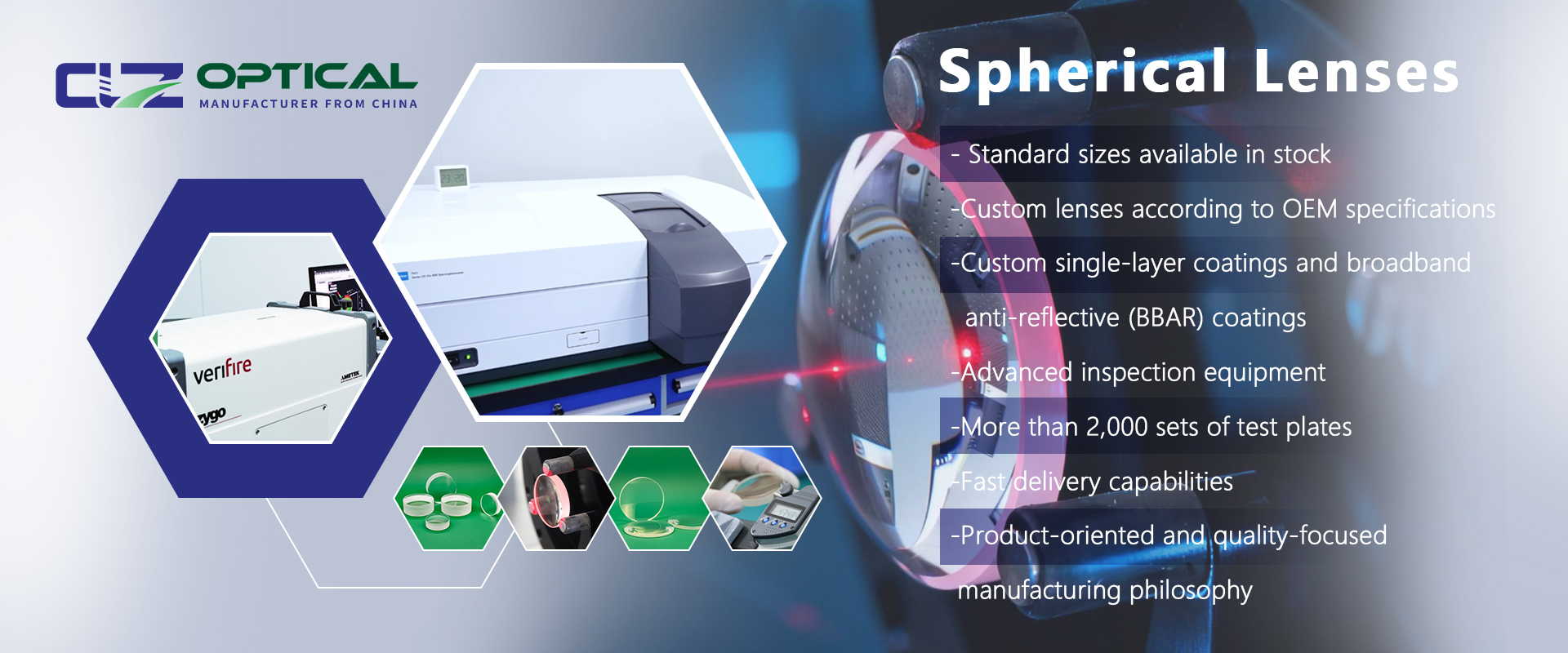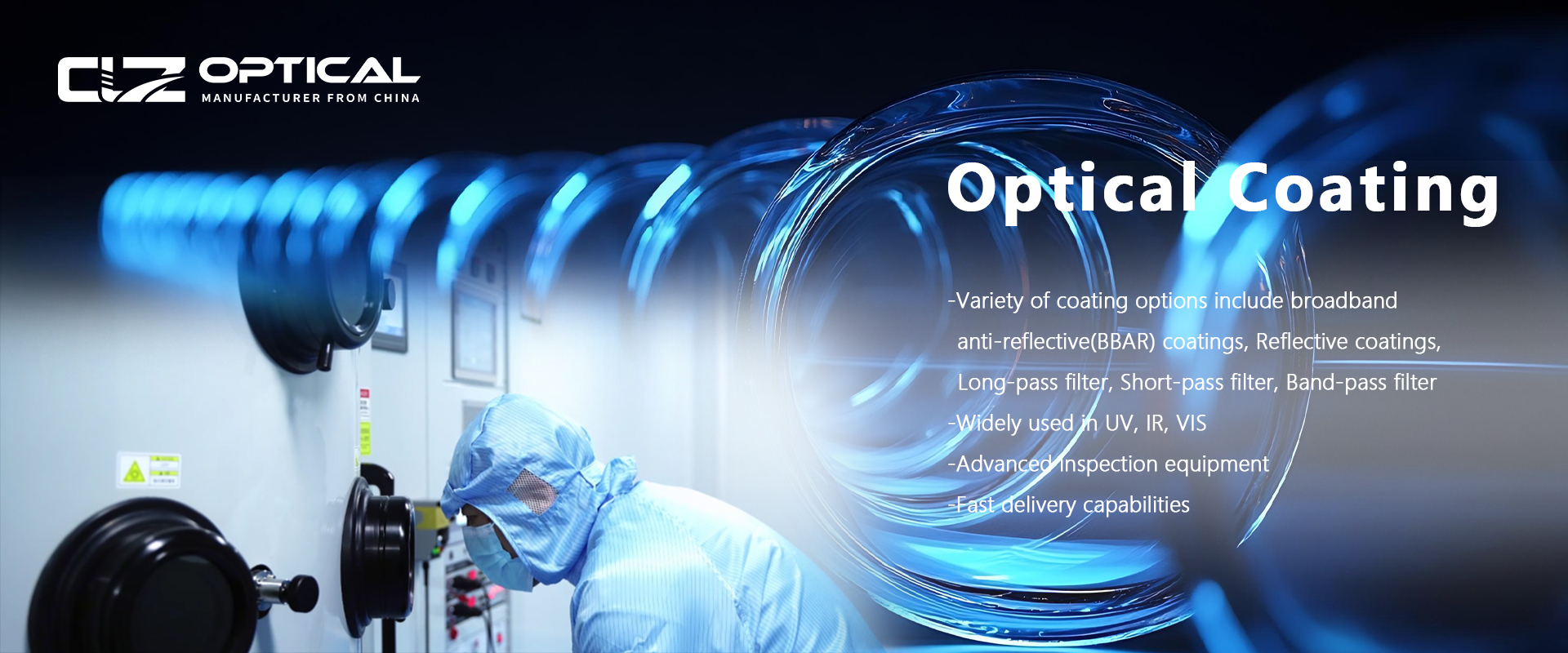Application of Optical Components in Laser Systems
Jul. 19, 2025
CLZ Optical Co., Ltd. was founded in 2012 with a commitment to the processing and manufacturing of precision optical components. Our products are used in a wide variety of fields including optical imaging systems, optical testing, medical instruments, lasers Systems, Environmental Science & Meteorology, Instrument, Underwater Optics and more. With excellent quality and exquisite craftsmanship, our products have won the widespread praise of our customers, both foreign and domestic.
As an enterprise focusing on the field of precision optics, CLZ Optical Co., Ltd. adheres to our core tenet of “Precision in production, specialty in quality”. To ensure each product can meet the specifications of our customer’s drawings and needs, we strictly follow ISO9001 quality certification system standards. Additionally, we employ a wide array of metrological instruments including ZYGO interferometer, Agilent Cary 5000 Spectrophotometer, various instruments for measuring transmission, reflection, centration, focal length, and any other measurements our customers may need.
CLZ Optical provides customized optical components for laser systems. Laser optical components are the core elements in laser systems for controlling beam characteristics. They manage photon energy distribution through precise optical interfaces, enabling beam focusing/shaping, transmission guidance, spectral purification, and energy regulation. These components precisely control laser mode quality, suppress wavefront distortion caused by nonlinear effects, while isolating back reflections and stray light interference, ensuring system stability. In fields such as industrial precision cutting, medical targeted therapy, and scientific ultrafast lasers, customized optical components enable laser systems to meet stringent requirements such as micron-level processing accuracy, selective biological tissue interaction, and femtosecond pulse control.
CLZ Optical provides full-process customized solutions based on key client parameters including laser wavelength, power density, and operating environment. From material selection (fused silica / zinc selenide / calcium fluoride, etc.), surface figure optimization (λ/10 accuracy) to damage-resistant coatings (ion beam sputtering technology), components ensure stable performance under kilowatt-level high-power loads or deep ultraviolet extreme conditions. Simultaneously provides optical system integration and testing verification services. Products cover a full range of core components including focusing lenses, collimating lenses, high-power mirrors, laser windows, dichroic mirrors, bandpass filters, beam splitter prisms, and attenuators.
2. Core Optical Components in Laser Systems
(1) Laser Lenses
Focusing lenses utilize the optical surface characteristics of fused silica or zinc selenide to converge divergent laser beams into microscopic interaction zones. Collimating lenses continuously correct beam propagation direction, ensuring collimation accuracy for remote operation. For specific industrial processing scenarios, cylindrical lenses achieve linear energy distribution through one-dimensional beam transformation, meeting requirements for cutting and scribing processes.
(2) High-Power Mirrors
Dielectric mirrors utilize multilayer film interference to construct resonant cavity energy feedback loops, significantly enhancing reflection efficiency at target wavelengths. Metallic mirrors leverage the intrinsic reflective properties of noble metal coatings to maintain stable reflection performance over a broad spectrum, making them suitable for multi-band composite laser systems.
(3) Laser Windows
Fused silica windows maintain stable transmission performance under high-temperature conditions due to their excellent thermal stability. Calcium fluoride windows, based on their unique crystal structure, provide effective transmission paths for deep ultraviolet lasers while maintaining extremely low optical absorption.
(4) Spectral Control Components
Dichroic mirrors achieve wavelength separation or synthesis of pump light and signal light through thin-film interference mechanisms, featuring steep spectral cut-off edges. Building on this, bandpass filters utilize precisely stacked coating structures to form narrowband transmission windows, simultaneously suppressing environmental stray radiation interference.
(5) Beam Control Prisms
Right-angle prisms perform 90-degree beam path redirection, maintaining high flatness at their reflection interfaces. Beam splitter prisms divide incident beams according to predetermined energy distribution requirements, achieving specific splitting ratios by controlling coating optical parameters.
3. Core Functions of Optical Components in Laser Systems
(1) Laser Lenses
Lens groups form the fundamental structure for laser energy control. Industrial precision cutting relies on focusing lenses to concentrate beams onto micron-level interaction points, achieving efficient separation of metal materials. Collimating lenses maintain beam pointing accuracy for long-distance transmission in laser ranging systems, ensuring the reliability of topographic mapping data. For specialized micro-machining needs, cylindrical lenses support sub-pixel positioning accuracy in display scribing processes through their one-dimensional energy distribution characteristics.
(2) High-Power Mirrors
Mirrors are the core carriers for laser energy management. Dielectric mirrors establish efficient energy recycling loops within solid-state laser resonant cavities, significantly improving the electro-optical conversion efficiency of YAG lasers. Metallic mirrors provide broad-spectrum reflection interfaces for multi-band laser systems, ensuring signal integrity for infrared thermal imaging equipment in complex environments.
(3) Laser Windows
Windows safeguard laser systems under extreme operating conditions. Fused silica windows isolate plasma sputtering from kilowatt-level fiber lasers, preventing ablation of CCD sensor core components. Calcium fluoride windows maintain high-purity transmission channels for deep ultraviolet lithography systems, ensuring linewidth control accuracy in integrated circuit manufacturing.
(4) Spectral Control Components
Spectral components enable precise laser energy selection. Dichroic mirrors efficiently separate 808nm pump light and 1064nm signal light within fiber lasers, optimizing laser output power stability. Bandpass filters extract characteristic fingerprint peaks in Raman spectroscopy, providing high signal-to-noise ratio optical evidence for material composition analysis.
(5) Beam Control Prisms
Prisms enable spatial reconstruction of complex optical paths. Right-angle prisms achieve optical path folding in compact laser equipment, solving system layout challenges in limited space. Beam splitter prisms provide the basis for precise energy distribution in laser interferometers, supporting nanometer-level displacement measurement accuracy.
4. CLZ Optical Manufacturing Capabilities and Services
CLZ Optical provides manufacturing services for the full range of core optical components for laser systems. We precisely manufacture laser lenses for beam control, produce high-power mirrors for optical path direction management, develop spectral filters for accurate target band selection, machine beam control prisms for optical path spatial reconstruction, and produce laser windows to isolate environmental interference and protect core components.
Through strict quality control, CLZ Optical ensures component reliability in industrial precision cutting, medical lasers, and ultrafast research fields. We are your steadfast partner in building efficient laser systems.




















